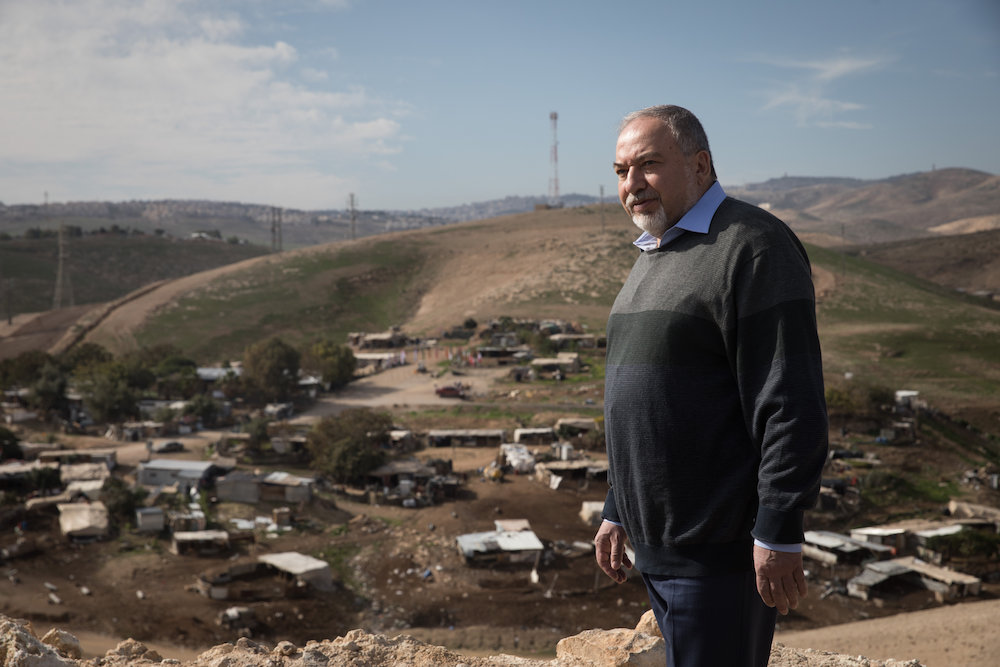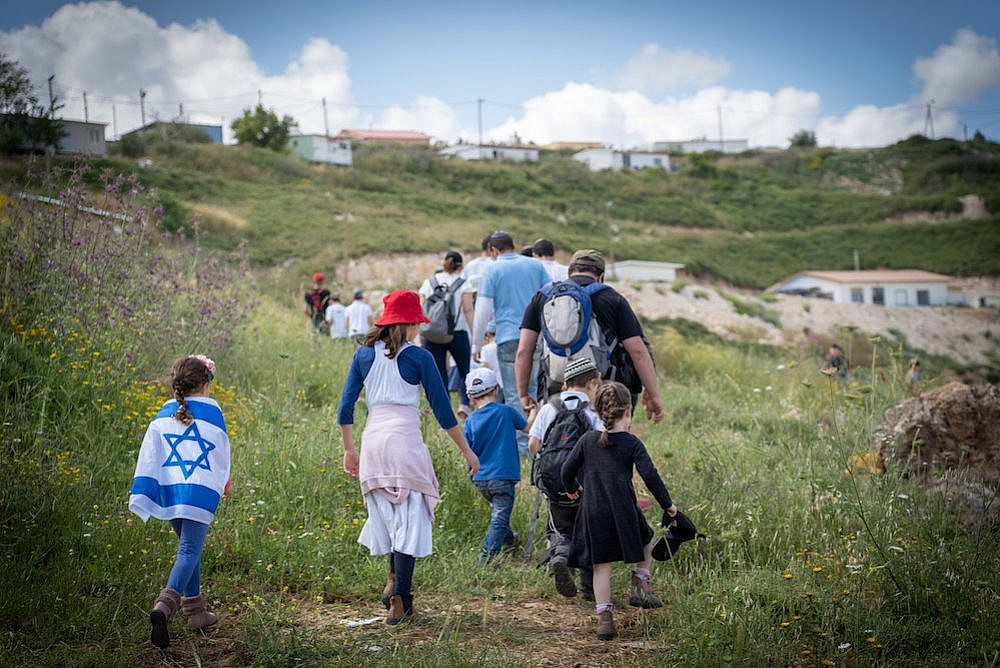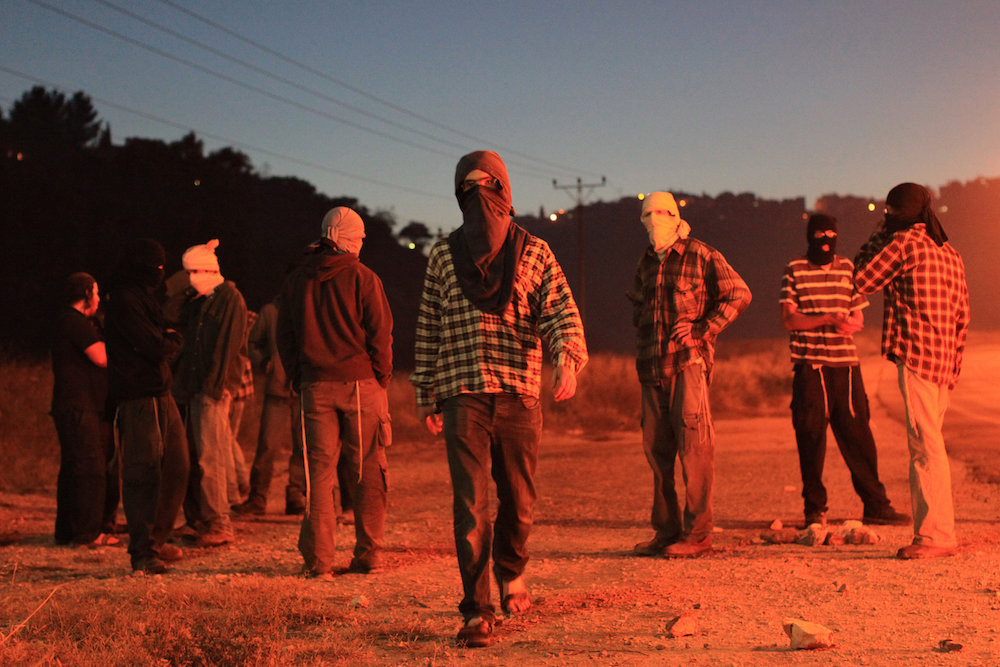The time
“Time came and stole our happiness and our peace and our security” — “The Love That Was,” Baligh Hamdi
On February 10, 2009, elections for the 18th Knesset took place in Israel, three-and-a-half years after Prime Minister Ariel Sharon removed 9,000 settlers from the Gaza Strip. Benjamin Netanyahu’s Likud party did not win the most votes, but he was the only politician able to cobble together a coalition. Just a few months before the elections, Netanyahu launched his campaign in an area known as E-1, strategically located between the settlement of Ma’ale Adumim and East Jerusalem.
Speaking to a group of journalists on the day of the launch, Netanyahu said: “We want to establish contiguity between larger Jerusalem from the west to the east, the Palestinians want to build contiguously from the south to the north, and one will defeat the other.”
Several months after the 2009 elections, Netanyahu delivered what became known as the “Bar Ilan Speech,” in which he said that “the territorial question will be discussed as part of the final peace agreement. In the meantime, we have no intention of building new settlements or of expropriating additional land for existing settlements. But there is a need to enable the residents to live normal lives, to allow mothers and fathers to raise their children like families elsewhere.”
Over a decade has passed, and the rhetoric Netanyahu uses today can be summarized in a statement he delivered a week before the second elections of 2019: “Today I announce my intention, with the formation of the next government, to establish Israeli sovereignty on the Jordan Valley and the northern Dead Sea [settlements].”

Ten years is a long enough time to “look back with a certain fear,” as Israeli journalist Amos Elon once put it, and take stock of what has — and hasn’t — happened over the years.
First and foremost, the distinction between the Land of Israel and the State of Israel has never been more enigmatic for the majority of the Israeli public. Here’s a short story to illustrate: on the first day of the school year, my daughter’s class (she goes to a relatively liberal and secular high school in Jerusalem) was invited to take part in a day working on a date plantation in one of the West Bank settlements in the Jericho region. The principal, who as far as I know leans left, did not see any problem with this. The same went for the other teachers and parents, apart for one. The students, raised in the Israeli education system, don’t have the basic tools to understand the political context in which they live.
Does this mean the settler right has won? Can the settler right — whose political doctrine rests on the idea of Greater Israel and complete legal and political segregation between Israelis and Palestinians in the West Bank — win? Can the reality in the West Bank, which is a combination of military occupation and civil apartheid, last in the long run?
Ten years ago, my answer to these questions was undoubtedly “no.” I was convinced that maintaining such a status quo in the long run was impossible. Today, after a decade of Netanyahu and three years of Trump, we live in a reality in which the term “impossible” sounds as anachronistic as the words “peace process.” If there is one thing the last 10 years has done to us — all of us — it has been to entrench the current reality in our consciousness and fundamentally undermine our confidence as to the boundaries of the possible.
Reality, out in the open
“And does any one of you raise the possibility that a Jewish settlement will live at the bottom of a hill while armed Palestinians sit above…?” (MK Ariel Sharon, October 18, 1999)
Kufr ad-Dik is located six miles west of the town of Salfit on the western slopes of the West Bank. In 2007, the last time a census was held in the West Bank, the village’s population was approximately 4,500 people. No less than 1,000 settlement units of the total 20,000 that have been built over the last decade in the occupied territories can be found in the settlements of Alei Zahav and Paduel, both of which were built in the first half of the 1980s on land belonging to Kafr ad-Dik. The massive building in these settlements began immediately with the end of the fictitious 10-month “freeze” on settlement construction that began at the end of November 2009. At the time, I published an article in Haaretz that ended with the following words:
Benjamin Netanyahu will probably not win the Nobel Peace Prize, but he is certainly likely to win the Nobel Prize for physics, or at least chemistry, in the name of the Israeli government, which discovered that — contrary to what scientists had thought until now — water is not the only substance that expands rather than contracts when it freezes.
Aerial photos of Paduel and Alei Zahav from the last decade show precisely how a significant part of the open space that was at the disposal of the residents of Kafr ad-Dik for generations was gradually stolen for the purpose of building bourgeoise settlement suburbs. A similar process took place in dozens of settlements located along the western strip of the West Bank. These include Eshkolot and Shima’a in the south, Nili, Na’ale, Barkan, and Salit in the central region of the West Bank, and Shaked and Reihan in the north. The vast majority of the residents there are secular, and over the years these settlements have undergone an accelerated process of growth and suburbanization.
The last decade has also been especially generous to ultra-Orthodox settlers, which are, in fact, the locomotive of accelerated demographic growth among the entire settler population. Over a third of settlers today are Haredi, and the annual growth rate in Modi’in Illit, Beitar Illit, Agan HaAyalot, Tel Zion, and Immanuel stands at between four to eight percent — significantly higher than that of the general settler population (3.5 percent) and that of the Israeli population (1.9 percent). This was, after all, a decade in which real estate prices drastically increased; the pressures of the real estate market, and particularly that of the ultra-Orthodox, flowed into the settlements.
Construction also took place in the national-religious settlements, home to the ideological core of the movement, and located in the heart of the West Bank. Over the last 10 years, between dozens and hundreds of new homes were built in Susya, Otniel, Karmei Tzur, Efrat, Geva Binyamin, Ofra, Beit El, Eli, Tapuach, and Itamar. This took place concurrently with the building frenzy in the outposts around the settlements, dozens of which are now in various stages of becoming formalized settlements.
When it comes to outposts, one cannot help but give credit to Ehud Barak. The former prime minister may have become part of the opposition in the last two years, but between 2009-2013, he served as defense minister under Netanyahu. It was Barak who approved a military order that created a legal and planning platform through which 25 new outposts — most of them sheep or cattle farms — were established. This was the most significant move that has taken place over the last few years vis-à-vis the takeover of open spaces in the West Bank.
This has been particularly felt in the “Gav Hahar” region, the area along Route 60, from Susya in the south of the West Bank all the way up to the settlements that surround Nablus. and where Palestinian shepherd communities, dependent on access to these open areas, have lived for generations. The residents of these outposts, which were built with utmost precision in order to become formalized in the future, are involved in the most violent form of dispossession and expulsion. One can cautiously assume that they have managed to minimize or entirely prevent access by Palestinian shepherds.
The settlers of the shepherd outposts are not the only ones to have taken land from the open areas of the West Bank. They have been joined by motorcycle enthusiasts, visitors to natural springs, and others who over the past decade helped turn large parts of the West Bank into an amusement park for the Israeli middle class, which has enough money and time to entertain itself. Looking back, however, it turns out the Israelis love bathing in West Bank springs and plowing through its terrain with jeeps and motorbikes much more than they actually love living there. The number of settlers over the last decade grew from 270,000 to 440,000 (80 percent natural growth), yet they still only make up 4.5 percent of the Israeli population and 14 percent of the entire population of the West Bank.
The settlement enterprise found greater success in agricultural takeover — a process that requires large budgets, violence, and deceptive lawyers to represent criminal settlers in the courts. Over the last 10 years, settlers began working nearly 4,000 acres of land, a third of which is recognized by the Civil Administration — the IDF body that runs the day-to-day life of the Palestinian population in the occupied territories — as private Palestinian land.
The majority of that land is located near the Gav Hahar settlements, and is used to grow olives and grapes for wine production. Another 60 percent of the land that was added (2,300 acres) in the last decade turned into date plantations in the occupied Jordan Valley. The rapid increase in the area of date plantations was enabled by the completion of the sewage treatment plant in Nabi Musa in 2014, which streams tens of millions of liters daily to irrigate date plantations around the Jordan Valley, the northern Dead Sea settlements, and in Military Zone 151, located between the Jordan River and the border fence.

The intensive activities of the settlement enterprise over the last 10 years is inversely correlated to the efforts Israel has invested in completing the separation barrier (since 2010, the work on the barrier included making minor alterations, including by changing its route in places like Bil’in and Jayous). This fact reflects a shift away from the once-dominant paradigm of unilaterally evacuating Israeli settlements beyond the separation barrier, which — despite all the denials and the lies — was planned as a means of forming a demographic barrier between Israel and the Palestinians. Instead, we have seen a return of the old paradigm of direct Israeli control through army and settler presence across the West Bank.
The reality Israelis don’t see
“The essential things in life are seen not with the eyes” – The Little Prince, Antoine de Saint-Exupéry
In addition to the visible changes, the past decade has seen changes among the two populations embroiled in the conflict. In the West Bank, we have seen a new generation of Palestinians that has never crossed the Green Line. Most of them do not speak Hebrew or know Israelis. They hate the Palestinian Authority, which they view as corrupt and collaborationist. They do not know the reality in the Gaza Strip and have not experienced or do not remember the scars of the Second Intifada. I have a hard time imagining a scenario in which all these characteristics are not translated into actions that the Israeli public does not take kindly to.
I’ve witnessed this shift firsthand in my encounters with young Palestinians whenever they ask if I can help them obtain work permits in Israel. I used to understand this as a matter of individual urgency, which overrides the interest of the wider Palestinian public. Today I wonder whether it expresses a transformation of the Palestinian concept of sumud, or steadfastness in the face of Israeli dispossession. Either way, it indubitably expresses the delicate balancing act and the interdependence that exists between the occupiers and the occupied.

One can hardly imagine a political constellation that will bring about the end of 52 years of occupation and settlements. On the one hand, the current political reality creates meeting points and joint interests between Palestinians and settlers, while on the other hand it deepens the dead end that the conflict finds itself in. This is the bedrock upon which the murderous and pro-transfer rhetoric we see online and in the Israeli media grows. The villages of Khan al-Ahmar and Susya may not have been evacuated due to the fear of a severe response from a number of Western countries, but smaller-scale expulsion attempts continue endlessly far and away from the collective Israeli consciousness. According to the UN, Israel demolished 6,000 structures in the West Bank over the last decade, leading to the displacement of 9,000 Palestinians.
All people struggle to continue living in a situation of uncertainty, and I am often asked about what I think will happen here. The trivial response is that no one knows. In the meantime, it is worthwhile to reflect on the fact that close to five million Palestinians now live in East Jerusalem, the West Bank and the Gaza Strip under various types of Israeli occupation. Approximately one million more Palestinians lived in those same areas a decade ago. The vast majority of them, and many others, will also be here at the end of the next decade.



